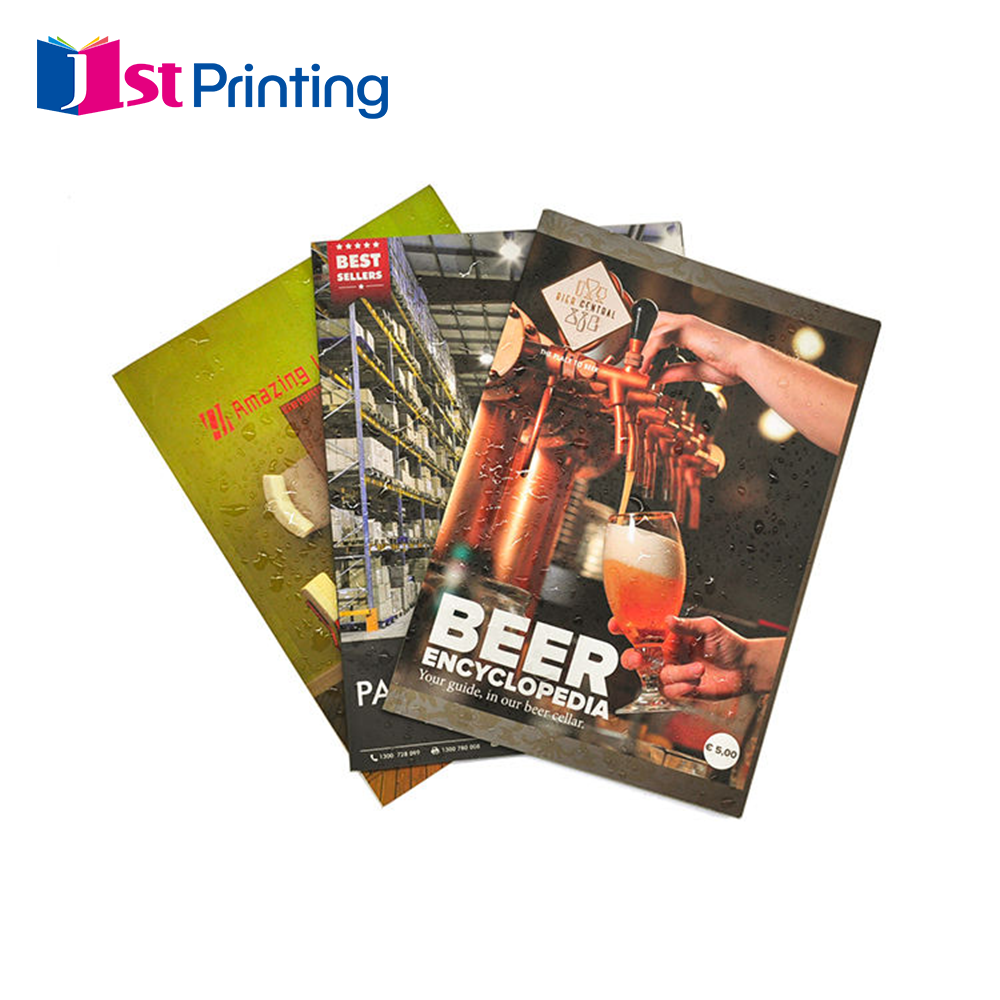Why Printed Branding Materials Still Matter
The Importance of Printed Branding Materials for Brand Recognition
Brochures, flyers and other printed stuff actually work better than most people think when it comes to remembering brands. Digital ads just get ignored or forgotten so fast these days. But when someone picks up a brochure or spots a really eye catching poster somewhere, there's something about holding it in hand that sticks in the mind. The physical nature of print engages more than one sense at once, making those brand memories stronger. For businesses trying to stand out online where everything gets lost in the noise, having something tangible like a well designed brochure can make all the difference. People remember things they touch and see in real life much better than anything flashing across a screen.
Printed branding stuff comes in many forms, from little business cards right up to massive posters that grab attention on walls. These items do much more than just promote products or services. They actually tell people what kind of company we're dealing with. Take business cards for example. A well made one says "we take ourselves seriously" almost instantly. Flyers with cool designs? Those scream creativity and innovation. Different formats mean companies get to pick exactly how they want to present themselves visually. Most important thing though is keeping everything looking cohesive no matter where customers see it first.
Printed materials play a big role in how people see a brand because they create consistency in both what's said and how it looks, which shapes customer opinions over time. When companies stick to the same color schemes, logos appear everywhere from business cards to brochures, and key messages remain unchanged across all printed stuff, the brand stays top of mind for consumers. Consistent branding isn't just about looking good though it actually helps build real trust between the company and its audience. Small businesses especially notice this effect when they start using professionally made marketing materials instead of generic templates. The difference is night and day in terms of appearing organized versus scattered, which matters a lot when trying to establish long term relationships with clients.
How Printed Branding Materials Build Trust and Credibility
Printed stuff still matters a lot when it comes to connecting brands with actual people. There's something about holding something physical that builds trust in ways screens just can't match. Sure, websites and apps are fast and easy to access, but there's no replacing the real world touch of a brochure, catalog or even a business card. People tend to remember things better when they can actually hold them in hand. Studies show that folks form stronger connections with brands after interacting with printed materials because our brains process tactile experiences differently than digital ones. That's why many companies continue investing in quality print despite all the digital options available today.
Good quality printed stuff really boosts how credible a brand looks and makes people remember it longer. When companies invest in nice paper stock and professional looking designs, customers notice and start associating that quality with what the brand stands for. Think about those glossy brochures with clear pictures or business cards that feel solid in hand these things tell clients the company cares about details. People tend to believe if a brand spends money on nice printing, they probably put similar effort into their actual products too. This kind of physical presence helps build trust over time, making the brand stand out among competitors who might cut corners on their marketing materials.
In conclusion, integrating well-designed printed branding materials into your marketing strategy can significantly boost trust and credibility, setting your brand apart in a crowded digital world. By investing in tangible, high-quality materials, brands can make a memorable impact on consumers, ensuring lasting loyalty and positive brand perceptions.
Types of Printed Branding Materials That Enhance Recognition
Printed branding materials are instrumental in boosting brand visibility and recognition. Here, we explore three types of materials that stand out for their unique benefits in enhancing brand awareness.
Modern Magazine Custom Booklet
For brands wanting to share their story in full detail while communicating core values effectively, custom booklets remain one of the best options available today. Take the Modern Magazine Custom Booklet for instance – many businesses find it works wonders when they need to connect with readers on a deeper level through rich content. The glossy cover combined with strong perfect binding means these booklets stand up well over time and look sharp on any coffee table or shelf. What makes them particularly valuable though is how they create lasting impressions. Unlike digital content that disappears after scrolling past, a physical booklet sits there waiting to be picked up again, reminding customers of what matters most about the brand long after the initial encounter.
Standard Customized Cardboard Sticker
Standard customized cardboard stickers offer an affordable option for businesses looking to turn regular items into walking advertisements. Companies stick these labels on all sorts of things from shopping bags to packaging boxes, basically making anything a potential billboard for their brand. The real magic happens at places like music festivals or busy stores where people naturally touch and see these stickers. When someone grabs a coffee cup with a clever sticker design, they're carrying around free advertising without even realizing it. These simple stickers work surprisingly well for getting names stuck in customer memories while keeping marketing costs low.
Corner Guard Spiral Planner
The Corner Guard Spiral Planner serves as both practical office accessory and clever brand exposure device. It shields desk areas from damage while helping people stay on top of their schedules, which means logos end up right where workers look all day long. Professionals who need to manage multiple projects find value here, as do students cramming for exams between classes. What sets this apart from regular planners? The spiral design actually fits into corners without taking up extra space, making sure company branding stays visible throughout busy workdays when attention spans are short and distractions plentiful.
In summary, these printed materials not only serve practical purposes but also solidify brand identity, making them essential for any marketing strategy aimed at boosting recognition.
Combining Digital Strategies with Printed Branding Materials
When companies mix digital tactics with traditional printed branding stuff, they actually get better results with audiences and keep their message consistent across different channels. Take QR codes for instance. Putting them on brochures, posters, or business cards lets customers scan right away and go from something tangible to online content. Businesses love this because it helps them see exactly how people interact with their materials. What makes QR codes so great? They turn boring old print into something that people can engage with. Someone just needs to pull out their phone and boom, they're on the company website, checking out special offers, or following along on social media. This kind of interaction doesn't just make folks more interested, it also leads to more actual sales in the long run.
Brand messaging needs to stay consistent whether appearing online or in print formats. When digital advertisements match the style and content of physical marketing pieces, brands gain stronger identity markers. Keeping things uniform across different channels does more than just help people recognize the brand faster. It creates a smoother overall experience for anyone interacting with the brand. The payoff from this approach includes broader brand exposure, better reputation building, and clearer communication of what the brand stands for. Over time, these factors contribute significantly to developing loyal customers who actually trust what they see from the brand across all touchpoints.
Best Practices for Designing Effective Printed Branding Materials
Creating good printed branding stuff needs some serious thinking about colors, fonts, and how everything fits together on the page. The right colors really stick in people's minds and make them think of your brand whenever they see those shades elsewhere. Think about it Coca-Cola red or Apple's minimalist white and gray palette. Fonts matter too they need to match what kind of vibe your brand gives off but still be easy enough to read at a glance. Layout is probably the trickiest part because it's all about finding that sweet spot where pictures and words work together instead of fighting for attention. Look at how Coca Cola arranges their logo and text so neatly next to each other, or how Apple packs so much information into clean spaces without looking cluttered. These big name brands have mastered this stuff over years of trial and error, which is why their designs just feel right when we see them.
When looking at how well print campaigns work, there are several key indicators worth tracking including more questions coming in, spikes in website traffic after seeing promotional materials, and what people actually say about them. A good campaign often brings noticeable increases in site visitors according to web analytics software, while others simply comment that they liked what they saw in brochures or flyers. Collecting both numbers and opinions helps businesses tweak their approach so next time around things hit better marks. Talking to customers through questionnaires and checking where new business contacts came from when linked back to printed stuff gives real world context about whether all that printing money was spent wisely.
Conclusion: Leveraging Printed Branding Materials for Long-Term Success
Despite all the bells and whistles of digital marketing these days, there's something about holding a physical piece of printed material that just clicks with people. Print has this real world presence that screens can't match. We've seen clients who thought they were going all digital find their customers still respond better to brochures, business cards, or packaging that feels good in hand. Sure, tech keeps moving forward at lightning speed, but smart marketers know print isn't going anywhere anytime soon. Many industries still rely on printed collateral for events, trade shows, and direct mail campaigns where touch matters more than pixels.
The Future of Printed Branding in a Digital World
Even with all the digital stuff out there, print materials still matter a lot for brand identity because people actually hold them in their hands and remember them better. The physical aspect of printed items gives businesses an edge when it comes to building trust with customers. Think about it this way: when someone receives a professionally designed brochure or a well-made business card, they tend to take the company seriously. That's why smart marketers continue to incorporate print elements like flyers, posters, and even old fashioned mailers into their overall strategy. These tangible pieces stick around longer than most online content and help maintain brand visibility in the real world.
Final Thoughts on Brand Engagement Strategies
Getting the best results from marketing efforts usually means mixing traditional print materials with digital strategies and other approaches. When brands combine different methods, they actually strengthen their message delivery while giving customers multiple ways to connect with what they're selling. Take for instance those business cards with QR codes pointing to websites, or flyers that include links to short explanatory videos online. These combinations keep people interested over time rather than just one-time interactions. Most companies find that this multi-channel approach works better for building lasting relationships with their audience base.


























